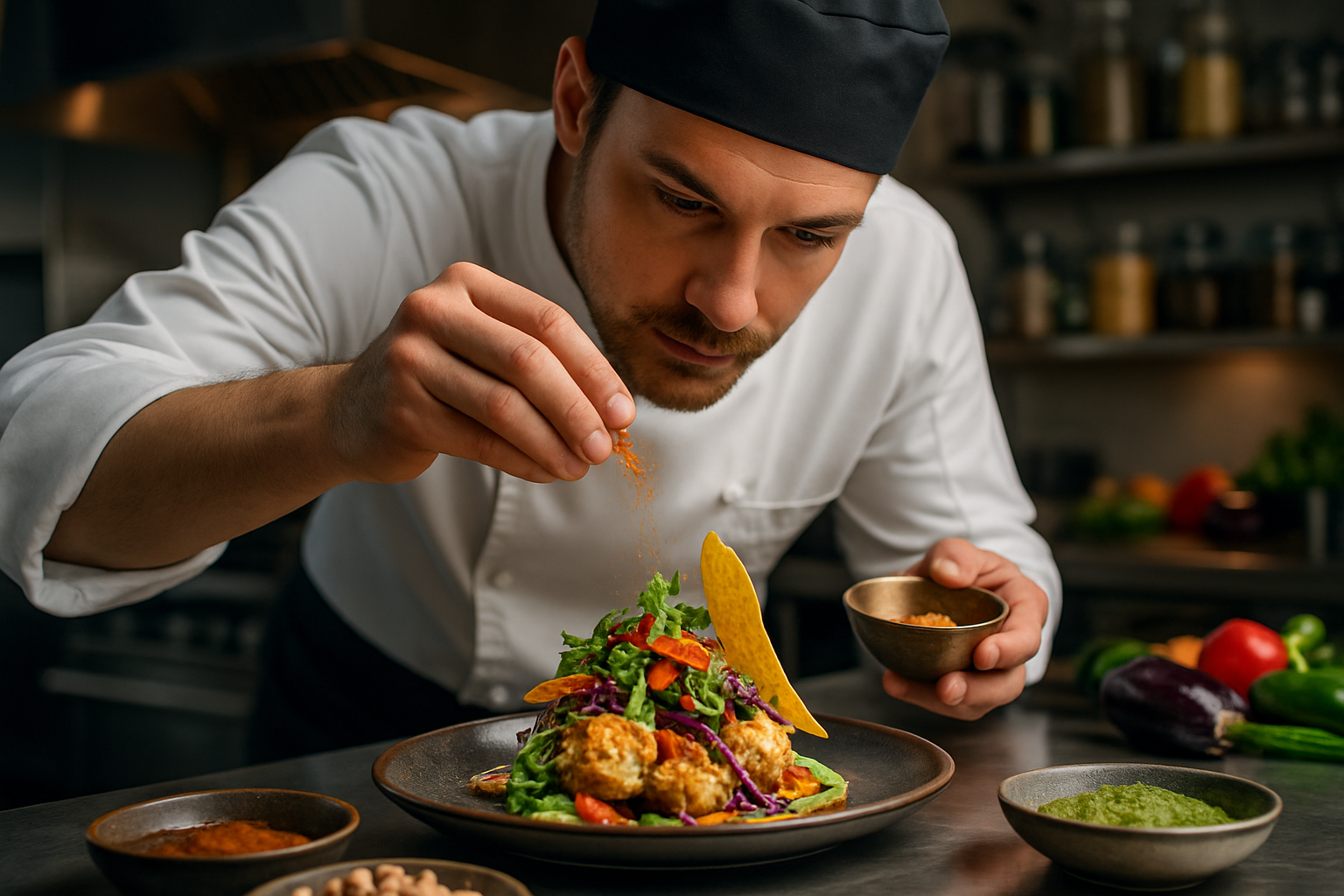Culinary Alchemy: Transforming Humble Ingredients into Gourmet Delights
Embark on a tantalizing journey where ordinary ingredients metamorphose into extraordinary culinary creations. Discover the secrets of elevating simple foods into gourmet masterpieces, as we explore innovative techniques and flavor combinations that will revolutionize your home cooking experience.

Unexpected Flavor Pairings
One of the most exciting aspects of culinary alchemy is the exploration of unexpected flavor combinations. By stepping outside traditional flavor boundaries, we can create dishes that surprise and delight the palate. Consider the marriage of sweet and savory, like a strawberry and basil salad drizzled with balsamic reduction, or the umami-rich combination of miso and butternut squash in a creamy soup. These unconventional pairings not only elevate the individual ingredients but also create entirely new flavor profiles that are greater than the sum of their parts. Experimenting with contrasting tastes, such as pairing tart citrus with rich, fatty meats, or combining earthy mushrooms with bright, zingy herbs, can lead to culinary breakthroughs that transform simple ingredients into sophisticated dishes.
Texture: The Unsung Hero of Gourmet Cooking
While flavor often takes center stage in culinary discussions, texture plays an equally crucial role in elevating dishes from ordinary to extraordinary. The interplay of different textures can turn a one-dimensional dish into a multi-sensory experience. Consider adding crispy elements to creamy dishes, such as topping a velvety soup with crunchy croutons or sprinkling toasted nuts over a smooth risotto. Alternatively, introduce unexpected softness to traditionally firm ingredients, like slow-cooking tough cuts of meat until they’re meltingly tender. By consciously incorporating a variety of textures – smooth, crispy, chewy, and crunchy – into each dish, we create a more complex and satisfying eating experience that engages all the senses and transforms simple ingredients into gourmet delights.
The Power of Presentation
In the world of gourmet cuisine, presentation is not just about making food look pretty – it’s an integral part of the dining experience that can elevate even the simplest dishes. The way a meal is plated can dramatically influence how it’s perceived and enjoyed. Start by considering the color palette of your ingredients and aim for a visually striking combination. Use negative space on the plate to draw attention to the main elements of the dish. Experiment with different plating techniques, such as stacking components vertically or creating artistic smears with sauces. Even everyday meals can be transformed with thoughtful presentation – try serving a humble soup in a hollowed-out bread bowl or presenting a simple salad in a Parmesan cheese crisp bowl. Remember, we eat with our eyes first, and a beautifully presented dish can turn a casual meal into a gourmet experience.
Infusing Complexity Through Cooking Techniques
Mastering various cooking techniques is essential in transforming simple ingredients into gourmet creations. Techniques like sous vide cooking can elevate tough cuts of meat to tender perfection, while smoking can add depth and complexity to vegetables and fruits. Experiment with fermentation to create unique flavors and textures, or try molecular gastronomy techniques to present familiar ingredients in surprising new forms. Even simple techniques, when executed perfectly, can have a transformative effect. For example, mastering the art of caramelization can turn ordinary onions into a sweet, complex condiment that elevates burgers, sandwiches, and salads. By expanding your repertoire of cooking techniques and applying them thoughtfully to everyday ingredients, you can create dishes that rival those found in high-end restaurants, all from the comfort of your own kitchen.
Helpful Tips for Culinary Alchemy
• Invest in quality staple ingredients like extra virgin olive oil, aged balsamic vinegar, and flaky sea salt to enhance simple dishes.
• Experiment with herb and spice blends to create unique flavor profiles for familiar ingredients.
• Master the art of reduction sauces to add depth and complexity to your dishes.
• Learn to make your own stocks and broths for a richer, more nuanced base in soups and sauces.
• Explore different cultural cuisines for inspiration on novel ways to prepare common ingredients.
• Practice mindful seasoning throughout the cooking process, not just at the end.
• Incorporate umami-rich ingredients like miso, aged cheeses, or mushrooms to boost flavor profiles.
• Experiment with different cooking temperatures and times to achieve optimal textures in your ingredients.
In conclusion, culinary alchemy is about more than just following recipes – it’s about understanding the principles of flavor, texture, and presentation that can elevate any ingredient from ordinary to extraordinary. By mastering these concepts and techniques, home cooks can transform their everyday meals into gourmet experiences that rival those found in high-end restaurants. Remember, the journey of culinary exploration is ongoing, so don’t be afraid to experiment, make mistakes, and discover new ways to turn simple ingredients into unforgettable dishes. With practice and creativity, you’ll soon be creating your own culinary magic in the kitchen.





